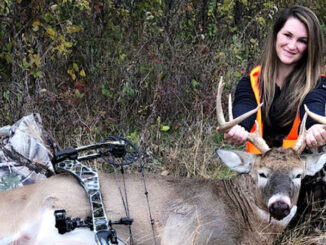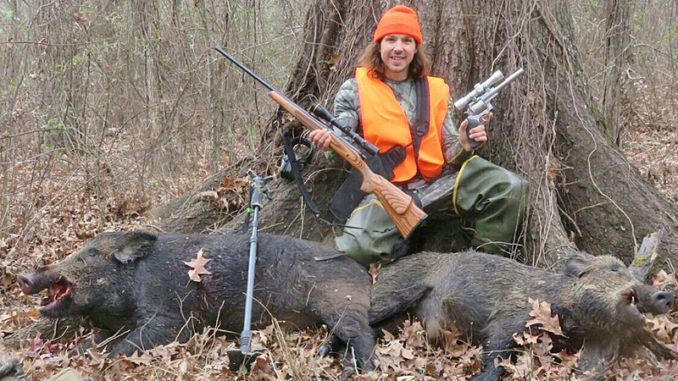
I spend several hours every week just looking at maps online. That’s because when I’m not in the woods, it’s the next best thing. Learning how to find oak trees from the internet is a trick that can be learned by carefully studying aerial maps. My passion of map hunting has resulted in harvesting many deer and hogs under specific trees I’ve first found on my computer or phone.
Before I take any trips to new areas, I always study the official maps for boundaries and public roads. Then, I scour the area using Google Earth or the satellite feature on Google Maps for potential hunting locations such as: pinch-points, funnels, logged areas, ridges, waterholes and sloughs. Most importantly, what I study is comparing and contrasting the tree tops and their colors to locate food trees.
Nuttall oak trees
This article I’ll focus on my favorite river bottom tree to hunt, the Nuttall oak (Quercus nutallii); and how to find them.
The Nuttalls are large red oaks that drop large striped acorns all throughout the fall, winter and even into the spring. There are many various food sources that the deer visit at the season’s start. However, as these food sources dwindle, the Nuttalls become a favorite snack to all the woodland critters.
Several years ago, during my very first year of online tree hunting, I spotted two isolated Nuttall oaks using Google. They were in a section of woods I had never been to before. After an initial scout trip where I found many chewed up acorns, I knew it was the perfect spot for a hunt.
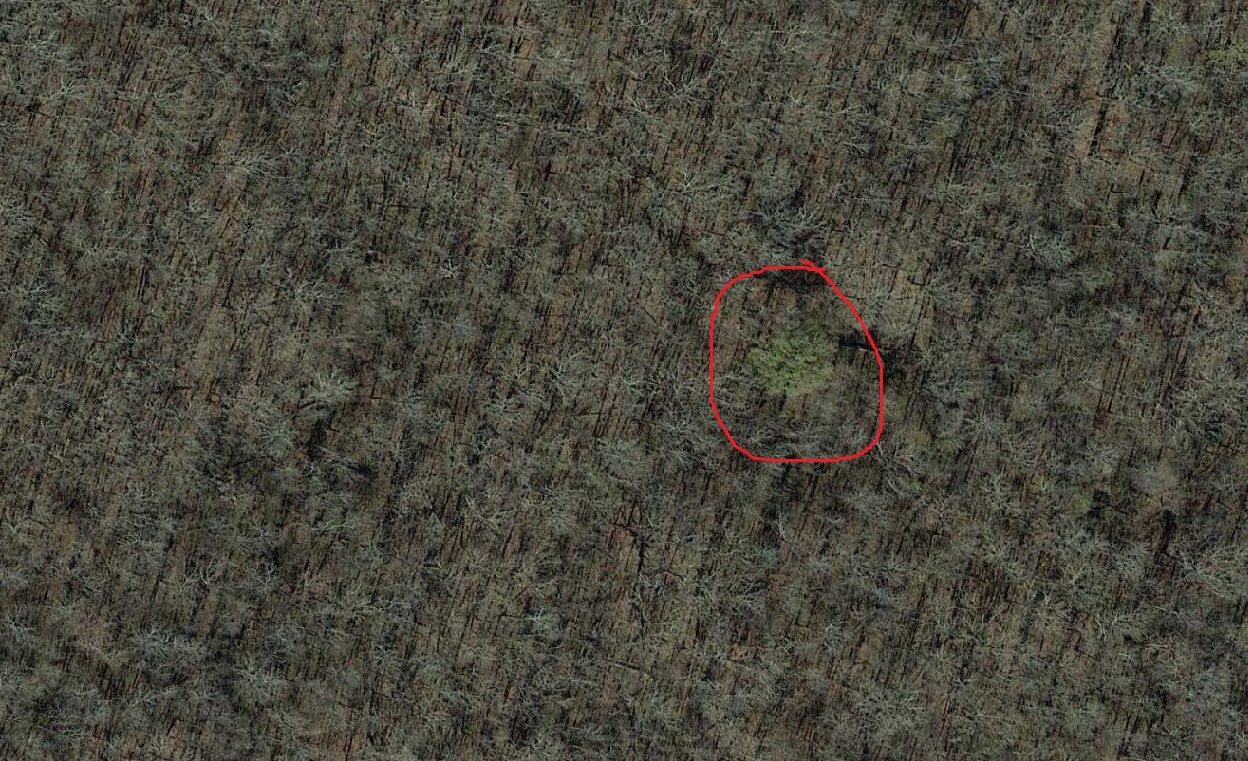
Two hogs
Later that winter, I climbed up next to those two oaks for the buck’s-only season toting my big .454 Casull revolver and rifle. Just minutes into the hunt, a big hog came out to feed on the tasty striped acorns from behind me. I filmed smoking that big pig with the hard-recoiling pistol.
An hour later, I saw a deer moving through in the distance. I zoomed in with my rifle scope and noticed it was just a spike. While watching him walk off through the scope, I heard a noise beneath me and spotted another hog under the other Nuttall. I quickly blasted that boar with my .270 and it dropped in its tracks.
I was testing out new copper bullets in both my pistol and rife for the first time. Both made huge holes, passing through their thick shoulder plates, to down over 400 pounds of pork using non-toxic ammo. Still to this day, the bones from those hogs remain under that big Nuttall tree where I cleaned them.
Map scouting
Finding the Nutalls online is fairly easy once the correct shade of lighter and brighter green is found on tree tops that look taller and fuller than nearby trees. Their bright green color shows best on winter-taken aerial maps since most Nuttalls hold their green color much later into the year. This makes them pop into view when most trees nearby are bare of leaves or have dull colors.
The historic feature on Google Earth allows users to view older maps taken during different times of the year. Some of the older maps don’t have great detail, but it’s useful to see how river levels and drought conditions affect an area. Also, seeing when that cutover was logged allows me a good estimate of its age.
The easiest way to learn a specific type of tree is to stand under one of interest and then see what that treetop looks like on your phone next to your location icon. Next, correlate historical map dates of that treetop to find any distinguishing details to find others of that tree type.
I search maps seeking lone isolated Nuttalls or small groups of them near a cutover or natural funnel. Then, I translate the GPS coordinates into Garmin’s GPS format and plug in the points to my unit before my scouting trip. This allows me to walk directly to each new tree to scout, so I can visit more planned locations in less time. When not using a GPS unit, I use my phone in satellite map mode to track my location as I walk towards a desired treetop on the map.
In the field
These trips are exciting to see what it really looks like at all the spots I found online. Boots on the ground is the only way to know for sure if a tree is worth being hunted. Some years a Nuttall will be full of tasty acorns, and other years the deer and hogs won’t be feeding at the same tree even though it’s dropping many acorns. Even if the spot isn’t productive one year, acorn crops rotate in cycles, so it may have a better acorn crop in the future.
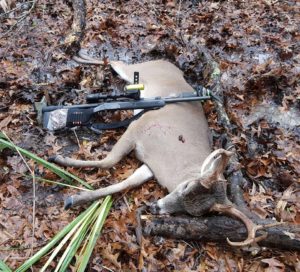
When the acorns are numerous among a ridge filled with dozens of Nuttalls, careful inspection of each tree will reveal the best one to hunt. The animals prefer a few particular oak trees to eat under. To figure out which has the tastiest acorns, I look for mostly cracked shells, turned up leaves and numerous animal droppings at one tree. A hot oak will be filled with deer droppings from old to fresh.
I have my best action under large giant oaks or small young oaks near or within previously logged areas.
A doe
Two seasons ago, I visited a new patch of small Nuttalls I saw on the internet where I had never hunted before. My wife went stalking hogs, while I grabbed my bow to scout the area. I toted in my climber unsure if I was going to use it or not.
After seeing one of the smallest Nuttall trees from the cluster filled with animal sign and turned up leaves, I just knew I had to get elevated right there. The only problem was the best tree to hunt out of was a tiny honey locust just 10 yards downwind. I remember getting all poked up and bloody as I climbed that tree and sat at an uncomfortable downward angle.
The discomfort didn’t last very long. An hour later, a group of does started making their way to me from the thick cutover nearby. They were coming in to feed at that hot Nuttall. I was able to down the biggest lead doe from the group on a 15 yard shot.
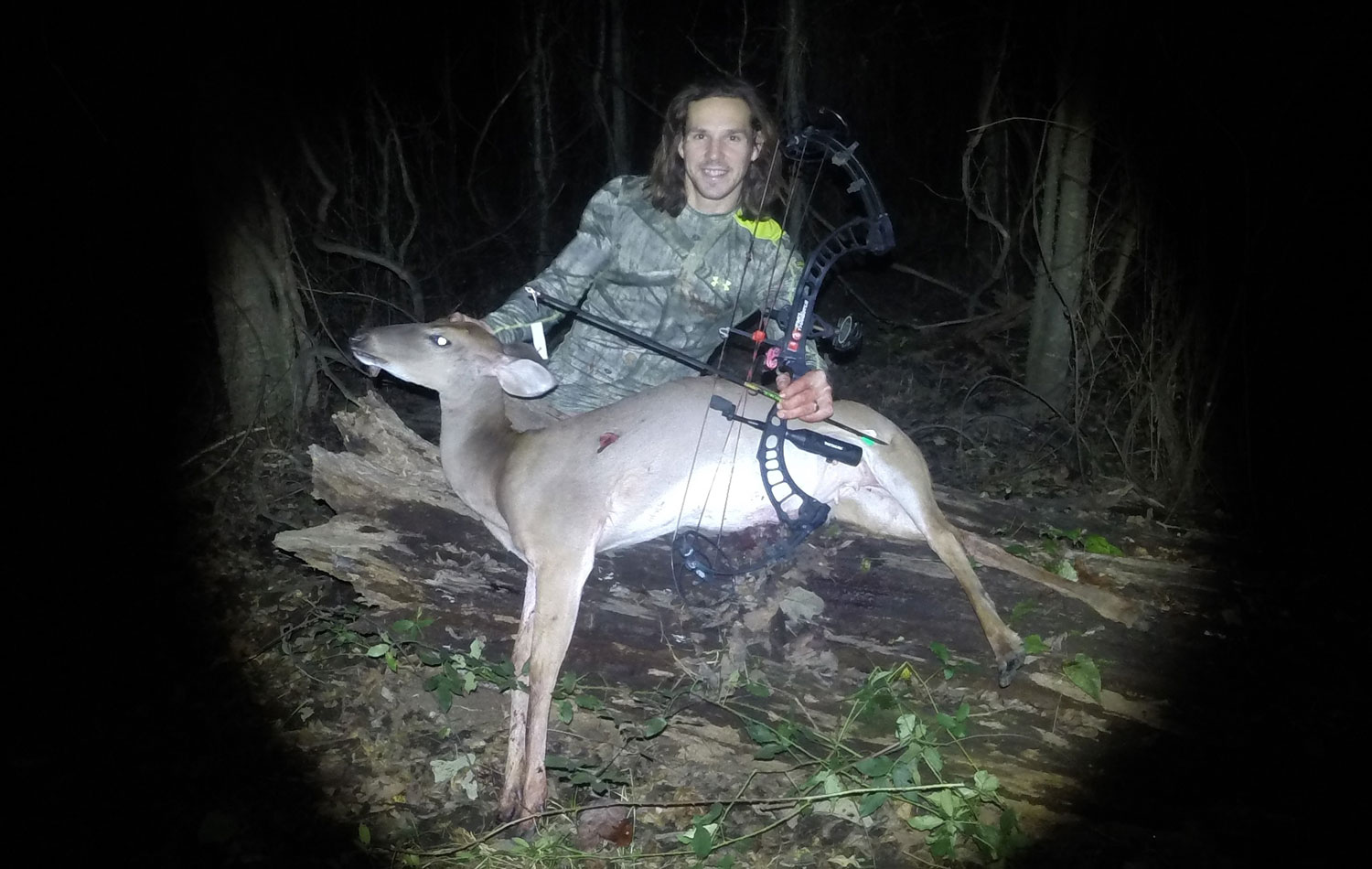
My wife shot a hog, and was wondering why it was taking me so long to get back that night. I had cleaned and quartered my animal in the woods, so I didn’t have to make two far hikes to that new deep spot. That was a good thing since we still had to go to look for her pig.
In my opinion, seeking new hunting spots is always more fun than hunting the same boring locations each season. With millions of acres of public land to scout, online tree hunting has endless possibilities making it a type of sport in and of itself.
